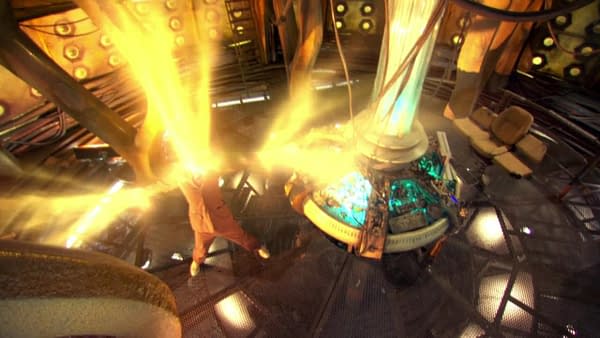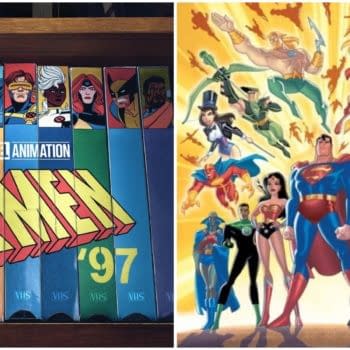Posted in: BBC, Doctor Who, TV | Tagged: bbc, chris chibnall, doctor who, matt smith, regeneration, russell t davies, steven moffat
Doctor Who 60th Anniv: Some Thoughts on a Lifetime of Regenerations
Let's discuss what regenerations have meant to BBC's Doctor Who, the symbolically charged transformation of dying Doctors into new Doctors.
Article Summary
- Explore the evolution of Doctor Who regenerations from simple edits to explosive CGI.
- Discover how Russell T. Davies reimagined regeneration.
- Unpack the use of regenerations as a weapon in The Time War, as shown by Steven Moffat.
- Examine the symbolic, often Christ-like imagery now inherent in the Doctor's "rebirth."
As we wait for Doctor Who to return in the 60th Anniversary Specials, the BBC has released yet another compilation video of regeneration scenes from the show. Why not? Regeneration is the most unique part of the series, after all, and what enables the show to be around forever, even if the actors can't be. And they're cool. Russell T. Davies, Steven Moffat, and Chris Chibnall made sure of that.

In the old show, regenerations were filmed by just placing the actors who played the Doctors in the same position as they lay on the floor and using simple video editing to cross-fade and some chromakey effects to show the transformation from the dying Doctor to the new one. That was when budgets for the show were tiny, but it was no less time-consuming. By the time Russell T. Davies revived the show in 2005, the budget was considerably larger, and the use of CGI effects and greenscreen had come into play, though the actors still had to stand in the same position as the old days, with computer matching to make sure they stayed in the same position and computer graphics were used to morph their faces and bodies to the new Doctor. The dying Doctor no longer lay down but stood as they regenerated to look more heroic and dynamic as they exploded almost orgasmically into a new person. Yes, it's very Freudian.
Davies hit on a cool Science Fiction idea with his rejigging the regenerations for the 2005 reboot. The Doctor's explosive regenerations are consistent with the Law of Thermodynamics: it would take a lot of energy to regenerate and replace every cell in a dying body and reboot it with a new living body. That energy would still have to go somewhere once it was used in the body, so it made sense that its exploding outwards could blow up the TARDIS. What's unwritten is that regenerations could have been used as a weapon of last resort during the Time War – a doomed Time Lord could use their regeneration energy to take out as many Daleks as possible if they knew they wouldn't survive. Steven Moffat showed that in the climax of "Time of the Doctor" when the dying Eleventh Doctor (Matt Smith) had a new regeneration trigger as the Daleks homed in for the final kill and took them all out when he aimed the energy using his body as a gun.
The modern regenerations also add a Christ-like layer to the Doctor as the show paints them as a saviour figure. Some atheist and non-Christian viewers have expressed discomfort with that imagery since it suggests a Church of England bias to the show. Regenerations now are certainly loaded with symbolic meaning. The golden light suggests enlightenment, and it's always about renewal, rebirth, and change, and that's Doctor Who in a nutshell.













